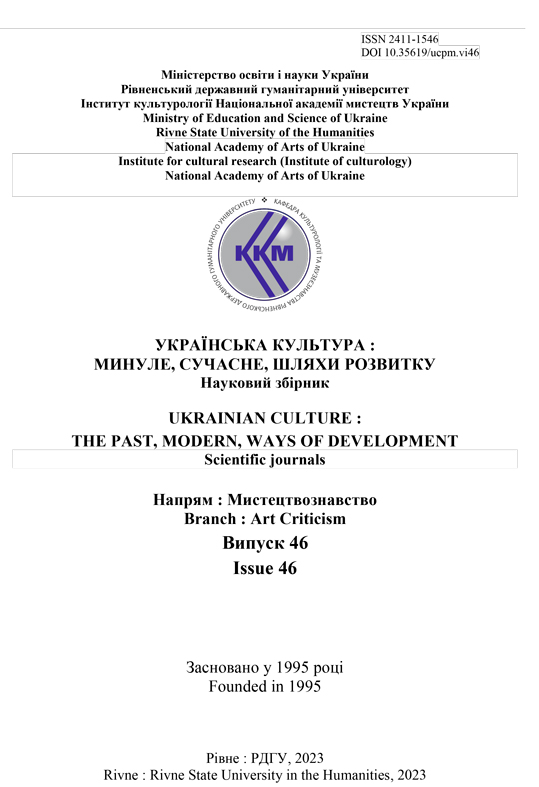CULTURAL AND HISTORICAL CONNOTATIONS IN MONUMENTS AND MEMORIALS OF UKRAINE 2000-2021
DOI:
https://doi.org/10.35619/ucpmk.v46i.692Keywords:
monuments, memorials, sculpture, public space, modern art, cultural memory, art object, artistic practices, realism, Ukrainian art.Abstract
The aim of this paper is to investigate cultural-historical connotations in monuments and memorials of Ukraine of the last twenty years as the main forms of commemorative artistic practices in public space; to outline their artistic features, to trace certain trends with a focus on the social and cultural context.
Research methodology. Six main publications that directly relate to the topic of the article and helped to reveal key aspects (monographs, scientific publications and media articles) were considered. Methods of observation, analysis and synthesis were applied.
Results. It has been established that during the period of Independence in Ukraine, a peculiar tendency towards «monument mania» can be traced, when numerous memorial objects appear in cities at a rapid pace. In addition, official monuments commemorating national heroes or events often imitate the aesthetics of Soviet monumentalism and, accordingly, carry a certain negative historical connotation at the symbolic and associative level. At the same time, over the last decade, contemporary memorial objects have appeared. We trace the search for new forms of working with memory but such forms do not always remain fully understood by the general public. In parallel, sculptural figurative monuments commemorating fallen soldiers continue to appear. In this context, after 2014, we can also talk about a certain military trend in monuments. Novelty. Considering the chronological framework of the research and its scientific novelty, there are still no fundamental scientific works on this topic. It has been found the research issues has not received its proper place in the scientific discourse, and its study is very important in the context of the dramatic events of the current Russian-Ukrainian war.
The practical significance. The understanding of previous experience will enable us to single out the key vectors of new directions of work with collective memory in public space and in which artistic forms, consistent with time, it can be embodied. Ukrainian scientists and art educators may find the information contained in this article useful for developing art practices in public spaces. The material can also be used for the special courses for the students, in particular future sculptors.




